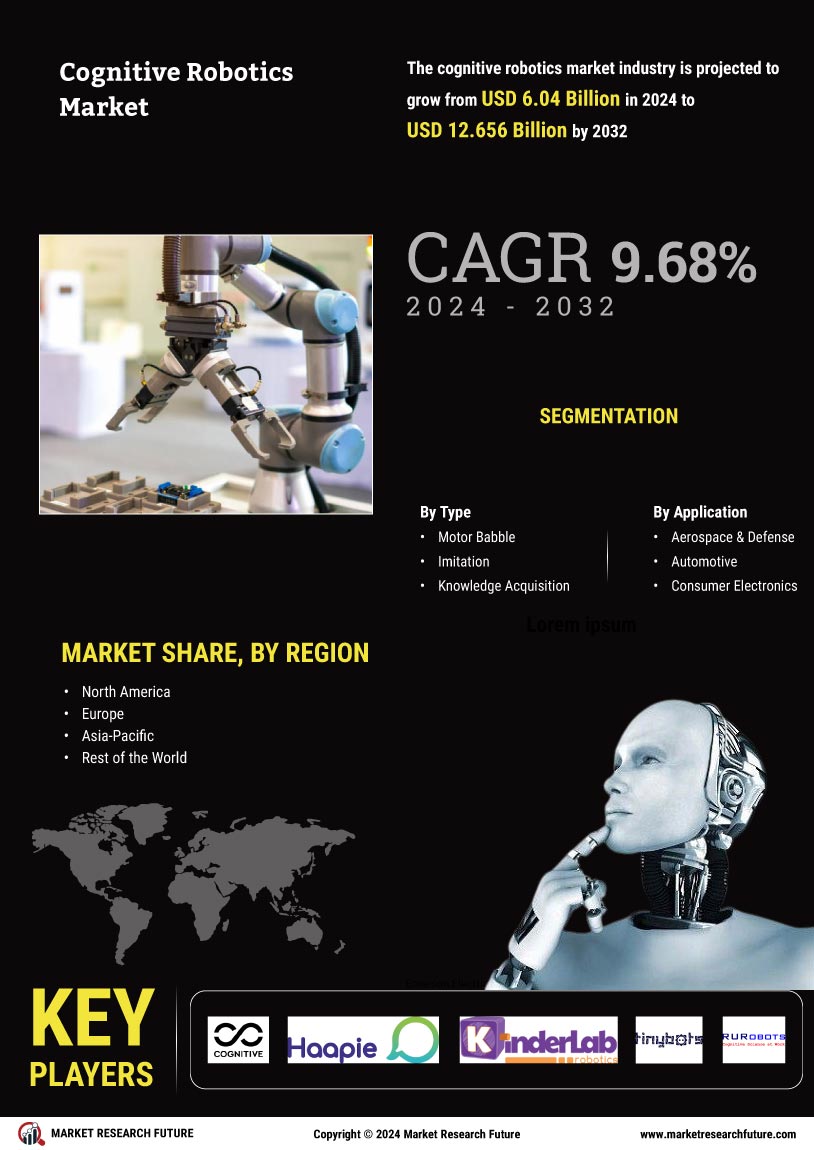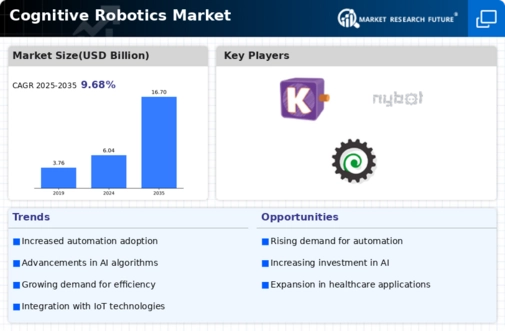Rising Labor Shortages
Labor shortages across various industries drive the adoption of cognitive robotics, particularly in sectors like agriculture, manufacturing, and logistics. As the workforce ages and fewer individuals enter the labor market, companies increasingly turn to cognitive robotics to fill gaps and maintain productivity. For instance, in agriculture, robots can perform tasks such as planting and harvesting, mitigating the impact of labor shortages. This trend is likely to contribute to the expansion of the Global Cognitive Robotics Market Industry, as businesses seek innovative solutions to sustain operations.
Market Growth Projections
The Global Cognitive Robotics Market Industry is projected to experience substantial growth over the next decade. With a market value of 6.04 USD Billion in 2024, it is expected to reach 16.7 USD Billion by 2035, reflecting a compound annual growth rate (CAGR) of 9.69% from 2025 to 2035. This growth trajectory indicates a robust demand for cognitive robotics across various sectors, driven by advancements in technology and increasing automation needs. The market's expansion is likely to create new opportunities for innovation and investment.
Increasing Demand for Automation
The Global Cognitive Robotics Market Industry experiences a notable surge in demand for automation across various sectors, including manufacturing, healthcare, and logistics. As organizations seek to enhance operational efficiency and reduce labor costs, cognitive robotics emerges as a viable solution. For instance, in manufacturing, robots equipped with cognitive capabilities can adapt to changing production lines, thereby improving productivity. The market is projected to reach 6.04 USD Billion in 2024, reflecting a growing recognition of the advantages that cognitive robotics offers in automating complex tasks.
Government Initiatives and Funding
Government initiatives and funding play a crucial role in advancing the Global Cognitive Robotics Market Industry. Many governments recognize the potential of cognitive robotics to enhance economic growth and competitiveness. Initiatives aimed at fostering research and development in robotics, along with financial support for startups and established companies, are becoming more prevalent. Such support not only accelerates innovation but also encourages collaboration between academia and industry. As a result, the market is poised for growth, driven by favorable policies and investments.
Integration of Robotics in Healthcare
The integration of cognitive robotics in the healthcare sector is transforming patient care and operational efficiency. Robots equipped with cognitive capabilities can assist in surgeries, rehabilitation, and elderly care, thereby addressing the increasing demand for healthcare services. The Global Cognitive Robotics Market Industry is witnessing a shift towards robotic-assisted surgeries, which have shown to reduce recovery times and improve patient outcomes. As the market evolves, it is anticipated to reach 16.7 USD Billion by 2035, highlighting the growing reliance on cognitive robotics in healthcare.
Advancements in Artificial Intelligence
Rapid advancements in artificial intelligence (AI) technologies significantly propel the Global Cognitive Robotics Market Industry. Innovations in machine learning, natural language processing, and computer vision enable robots to perform tasks that require higher cognitive functions. For example, AI-driven robots in healthcare can assist in patient monitoring and diagnostics, demonstrating their potential to enhance service delivery. The market is expected to grow at a CAGR of 9.69% from 2025 to 2035, indicating a robust trajectory fueled by continuous AI improvements.













